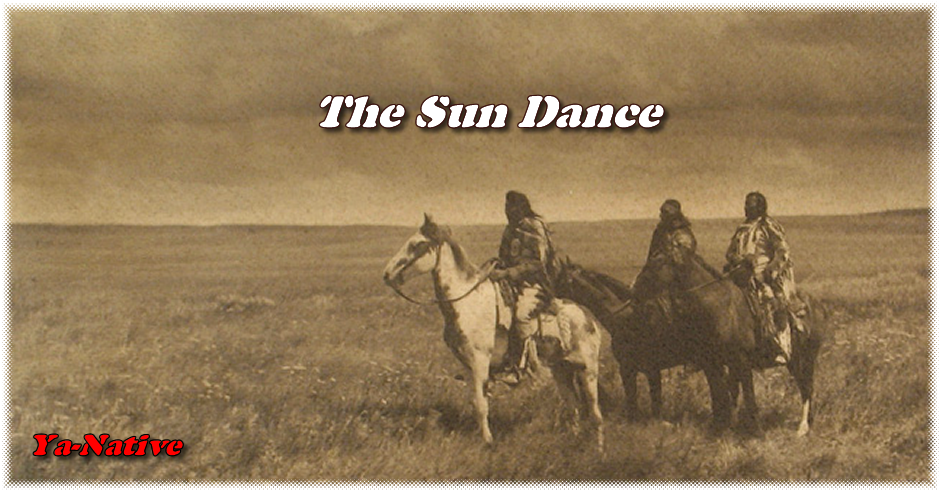
The quest for visions also played a part in the ceremony
common to many Plains tribes and known to most people
as the Sun Dance. The name Sun Dance comes from
the Sioux tribe. Other tribes had different names. The
Cheyenne called it the New Life Lodge; the Ponca called
it the Mystery Dance. Moreover, different tribes had different
rituals. But for all those tribes who held the ceremony,
the overall purposes were the same: to come into
contact with the spirit world; to renew nature, including
the Sun, the sky, and the Earth; to keep buffalo plentiful,
thereby assuring future prosperity; to bring victory in
battle; to make marriages successful; to settle old quarrels;
and to heal the sick.
Tribes held their annual Sun Dance in summertime. Summer was the season when the various bands of a tribe gathered for communal buffalo hunting. The bands set up their tipis in a great circle. Men and women of different bands socialized together and courted one another. They held horse races and other games. Tribal leaders smoked tobacco together and reestablished tribal unity. The event usually occurred during a full moon in the latter part of summer when berries were ripe. The entire ceremony lasted from eight to 12 days.
The various Sun Dance rituals were numerous and
complex. Every act had a special significance. Many of
the rituals involved drumming, singing, and dancing. In
the course of the Sun Dance, the Indians found and
erected a sacred tree trunk, usually a cottonwood, sometimes
as much as 30 feet high, in the center of a sacred
lodge of poles and branches. On top of the tree, they
placed a figure, usually made of rawhide.
One particular ritual, coming near the end of the Sun
Dance, has come to be associated with the entire ceremony
above all others. Some men had skewers implanted in their
chests that were tied to the sacred pole with ropes. Blowing
eagle-bone whistles and dancing to the drumbeat, they
danced backwards until the skewers ripped through their
flesh. Other men dragged buffalo skulls about the camp,
the skulls attached to their flesh with similar skewers. The
self-mutilation supposedly brought visions for individual
well-being, and the self-sacrifice brought good fortune for
the entire tribe.